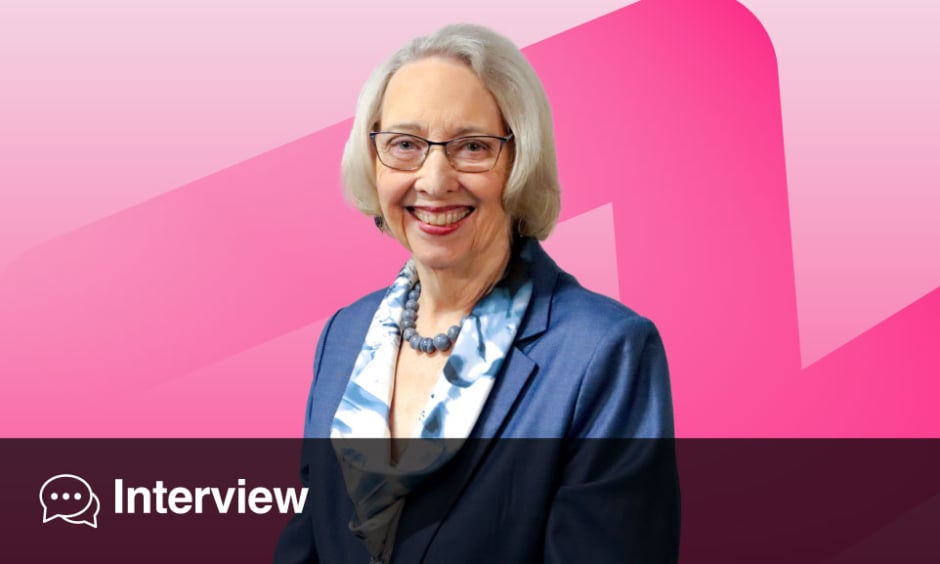Cathleen Biga Immediate Past-President, American College of Cardiology (ACC); President and CEO, Cardiovascular Management of Illinois, USA
Citation: EMJ Cardiol. 2025;13[1]:82-85; https://doi.org/10.33590/emjcardiol/JXTI7810
![]()
You made history as the American College of Cardiology (ACC)’s first non-physician president. With over 40 years of experience as a nurse, service line director, hospital vice president, and CEO, what perspective did you bring that might have differed from previous physician presidents?
I think what we have discovered post-COVID-19 is that cardiology is a team sport and caring for today’s patient population requires every member of the team. One of the highlights of my career was being with our patients, but as I moved into administration, I realised that in order to take care of that full continuum of patients, we really need everybody. It isn’t just our nurses and our advanced practice nurses, but our pharmacists, dietitians, technicians, vascular techs, echo techs, electrophysiology lab techs, and catheterisation lab techs are all very important as well. That was probably the one perspective that was very different and needed to be embraced, especially for our international colleagues. I think I was well received, and it was remarkable to really have that message heard. We’re seeing the difference, with Clara Inés Saldarriaga Giraldo becoming president of the Colombian Society of Cardiology and Cardiovascular Surgery. I applaud the college for their vision. They certainly do walk the talk, as we say in the USA, and it’s been an incredible honour to represent them. As leaders, we may be at the top for a while, but it’s our duty and our responsibility to reach down and raise others to that same stature as they go through their careers.
What advice would you give to nurses and other healthcare professionals aspiring to transition into business or leadership roles in healthcare, especially in environments traditionally dominated by physicians?
My career was in a non-academic setting, and when the thought of presidency bubbled in my head, the first person I asked was an academic physician. I figured if I was going to get pushback from anybody, it was going to be my academic colleagues, but his immediate answer was: “Amazing.” When I asked a second person, she didn’t hesitate. She said: “The time is right. The time is now. The time is for all of us to realise that we each bring a different skill set.” When I talked to nurses, I said to them: you can do anything, and there isn’t really a glass ceiling. The key is to be confident in yourself, to know what you know, and more importantly, what you don’t know. And for what you don’t know, surround yourself with people who are smarter than you and can help. My advice is: don’t assume anything’s impossible, because it probably isn’t. And whatever you do, keep your true North.
Equitable access to cardiovascular care was a recurring theme in your term as ACC President. What strategies have proven most effective in reducing disparities and ensuring that all patients receive high-quality care?
The reasons for these disparities are a little different across the globe. In the USA, many of our family practice internal medicine physicians have become hospitalists, and the funnel for entry-level, basic cardiovascular care has gotten very tight. There are a lot of baby-boomers who are ageing, and the issue is that preventative cardiology does not seem to be a priority in our current healthcare systems. It started with COVID-19, but we never recovered for a lot of other socioeconomic and environmental reasons. To address these gaps, we need advanced practice nurses functioning within their scope of practice and we need physician-led teams. The number one thing is to get the access, followed by equity. This is where we need to focus on women and underrepresented minorities. Everybody presents differently, and you’re not going to understand that in a 15-minute office visit. We need to have clinics in the communities where our patients live and not make it difficult for them to get to us. Healthcare deserts persist in the USA and across the globe, and I think that team-based care is one of the ways we can ensure that our patients always have access to care.
You’ve highlighted the importance of non-clinical competencies, such as emotional intelligence, for future healthcare leaders. What non-clinical competencies do you believe are the most essential for healthcare professionals to master in order to guarantee high-quality, equitable cardiovascular care?
It’s really about how to live, if you think about it. Developing these non-clinical competencies will also make you a better person, husband, wife, or friend. Some of the most important non-clinical competencies include diversity and inclusion, veracity, truthfulness, and authenticity. When you look in the mirror, you need to see the same individual that others see. Many people don’t, and sometimes, as physicians go through school, they forget that they are just human beings. A leader should understand their strengths and weaknesses. In the USA, diversity and inclusion are all sort of red words right now. But the reality is that we need teams that understand the cultures of our patients in order to treat everybody equally. Leaders cannot have personal agendas.
People think you can’t learn leadership, but you absolutely can. This is why the college, and I think the European Society of Cardiology (ESC) as well, is looking into embedding non-clinical competencies into our training programmes. It’s critical that we turn out great clinical individuals. If people are just good in the lab or at reading echocardiograms or MRIs, that’s great, but we need a little bit more than that. We need to understand what makes up those non-clinical competencies and ensure that we have taught those well. We all have biases, but you have to recognise them in order to be able to function. I don’t want physicians to read spreadsheets, or manage finances, but if they want to run a good heart failure clinic, they’ve got to understand the finances that go along with that. It’s a total package, clinical and non-clinical.
As CEO of Cardiovascular Management of Illinois, USA, you led the creation of an advanced practice provider-led Heart Function Clinic that integrates cardiologists with endocrinologists, obstetricians, pharmacists, nutritionists, and nursing staff. What lessons have you learned from this model that could be applied in other health systems?
Watching the evolution of cardiology has been amazing and heartwarming, but also a little scary. When I first started, you were a cardiologist and then you could become an interventional cardiologist or a non-invasive cardiologist. Now, we are sub-specialised within the sub-specialisation. Heart failure, cardio-obstetrics, cardiometabolic diseases, atrial fibrillation; so many subspecialty work groups require our colleagues from other specialties. If we’re really going to treat pulmonary hypertension, we need both pulmonary and cardiology. This is where dyad leadership comes in, including both a physician and their administrative colleague. It’s great when the administrative colleague has some clinical background, but I’ve seen dyad leadership work either way, because each has their own skill set.We were on the cutting edge, but we’ve got a few things to learn from our colleagues. An estimated 80% of the world will be in atrial fibrillation at some point, which is not a good statistic. How do we fix that? In my opinion, through a multidisciplinary clinic. To ease the patient, they should not have to manage five separate appointments. Who will organise all of that? Who’s orchestrating the plan of care for that patient? We have to remember that only 20% of a patient’s outcome is due to the clinical component, while 80% is based on environmental factors: where they live, who they live with, their finances, and their educational level. If patients don’t understand why they’re taking four pills for heart failure, they’ll stop taking them. So, it has to be a team-based approach, applied in an economically viable methodology. If we can teach them to take their blood pressure, weigh themselves, and then give them a diuretic in a heart failure clinic, we could save thousands of dollars by not having them sit in an emergency room for 4 hours. The endgame to all of this should be centred around the patient.
AI and quality metrics are becoming increasingly important in cardiovascular care delivery. How can healthcare leaders ensure that these tools enhance, rather than replace, the human elements of patient care?
The proper implementation of AI is critical, because we need human beings to ensure the ethical utilisation of AI. It is an amazing tool, and it can help us treat patients much better and quicker. But while it can process far more than our human brain can, it can never replace that human touch. The implementation of AI helps our physicians and other care providers to be efficient and not waste time in front of a computer. Our human eye can only see so much, so these tools can help enhance our imaging interpretation. When it comes to machine learning, it needs that human being to make sure it’s learning correctly. We can’t get so used to it that we automatically trust it; we still need our human brain to interact with it. I was just at a conference with one of the largest robotic open-heart centres in the country, and it was absolutely fascinating to watch the robot, but we’ve got to remember that it has a human being behind it. We need AI to help us deliver care, but it needs to be done in such a way that our healthcare leaders can ensure they’re being used appropriately.








